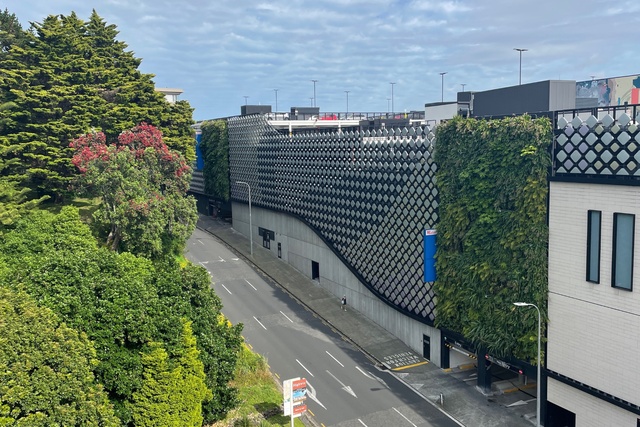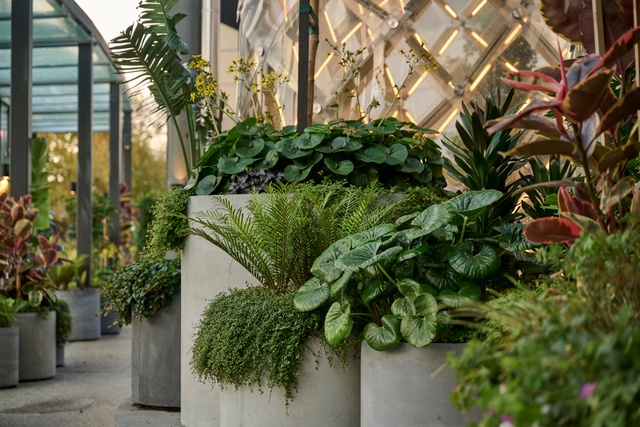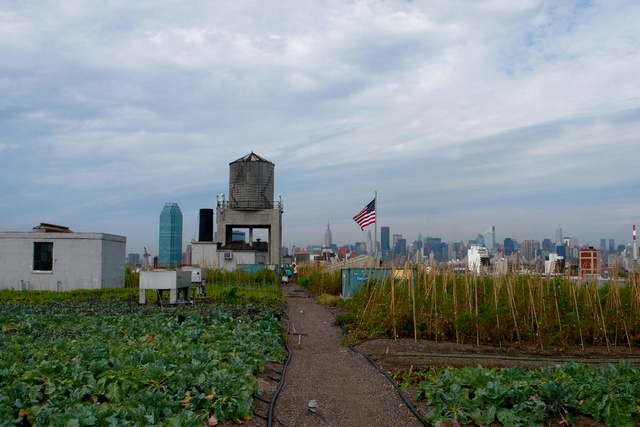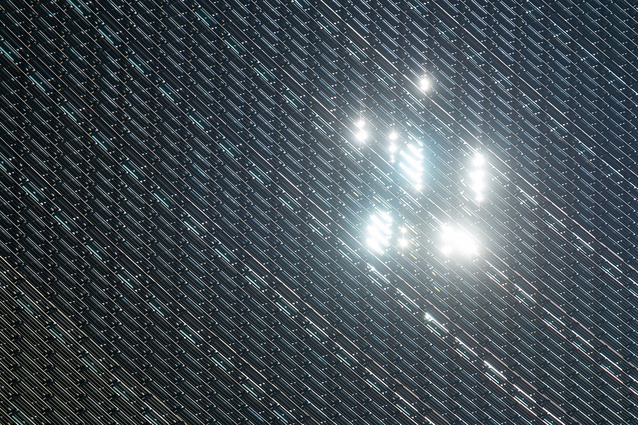The compelling case for green roofs and walls: Part 1, the environment
In 2013, the convex curves of the glass façade on London’s ‘Walkie-Talkie’ skyscraper reflected enough light to melt parts on a nearby parked car. It’s an example of the issues that can be created by our cities of glass, concrete, and steel.
Green façades and roofs are well-documented in their ability to help create visually pleasing environments where people want to be. However, the case for green exteriors goes far beyond the aesthetic — from mitigating urban heat islands to supporting social regeneration.
Improving how we experience cities
Green exteriors improve how we physically experience cities. They allow us to harness the benefits of plants’ albedo — their natural ability to reflect light. It’s a stark constrast to the ‘greenhouse effect’ created by heat-absorbing concrete, and light-reflecting glazing.
Green roofs range from functional grassed areas to eye-catching, large-scale community gardens. These can typically be categorised into three types:
- Extensive — This usually covers the entire roof area and is typically planted with hardy, drought-resistant greenery (such as sedums and wildflowers). The focus here is firmly on practicality.
- Semi-Extensive — Here, you are likely to see trees and shrubs, and potentially urban agriculture. There is likely to be some public access, perhaps via pathways and bench seating.
- Intensive — Imagine flourishing ornamental gardens and lush lawns interspersed with mature trees. An intensive green roof is primarily designed for public access, creating a space that brings people together to relax and enjoy.
When examining urban heat islands, green façades can offer further quantifiable benefits by acting to absorb and slow the release of heat from buildings. Research shows that green walls and green roofs can decrease surface temperature by ~17 °C.1 They’re also a highly effective means of diffusing noise.

Reducing the impact of carbon emissions
The built environment has been said to account for approximately 42% of annual global CO2 emissions.2 Imagine the impact if well-designed greenery was prioritised in every new construction project.
Carbon sequestration is a complicated process. It can be difficult to quantify, especially in the context of green walls and roofs where there are multiple variables (such as which plant species and soil depth is specified). Most carbon sequestrations models are based on trees. However, using one key study3 as a basis, it could reasonably be assumed that a green wall could absorb 2kg of carbon per year per square metre.
The work of Green Roofs for Healthy Cities makes for interesting reading. Based on average performance research, they estimate that the 3,112,818 square feet of installed green roofs will approximately yield:
- 120 tons of carbon sequestered every two years
- 5.06 million kWh (equivalent) of energy saved per year
- 1,199 full-time equivalent construction jobs
- 45 full-time equivalent maintenance jobs annually
- 36.9 million gallons of stormwater retained per year

Opportunities for storm water mitigation
When it comes to weather extremes, green roofs and façades act as a protective mechanism by slowing (and channelling) the flow of water over the building during extreme weather. This type of ‘wear and tear’ would otherwise see the building membrane expand, contract, and become prone to cracks.
As a rule of thumb, building membranes are given a warrantee of 25 years by most New Zealand manufacturers. Based on our experiences at Outside In, adding an expertly designed green roof can potentially extend their longevity by approximately 20 years.
As a natural filter, green walls and roofs can help improve the quality of grey water. Water capture and filtration can be applied on many different scales. These systems can be self-sustaining: capturing water, filtering it, and reusing it in watering the green walls and roofs.
They can also support planning for sophisticated water-independent buildings, which are completely independent to the municipal grid.
Improving air quality
COVID highlighted a need for an air quality revolution — especially in our workplaces, public health projects, and public spaces. Green roofs and walls offer a key opportunity for improving air quality because they naturally help clean, cool, and filter the air.
It is easy to observe their impact. Look at street-level greenery installed in projects surrounded by high-traffic areas. There is a visible build-up on the plants. While this is easy to clean during annual maintenance, it highlights the important role that exterior greenery contributes to improved air quality.
Creative ideas can be explored to improve air quality using greenery. If planned early in the project, green systems can be placed in front of air conditioning units. These will add a secondary air filtration and cooling mechanism.

The greenery that cultivates community
Brooklyn Grange shows another opportunity for green exteriors — an ability to rejuvenate and regenerate our communities. From a modest beginning in 2010, Brooklyn Grange is now delivering urban agriculture at a commercial scale. The project is also cultivating neighbourhoods by offering a space for people to gather and enjoy, access gardening lessons, and even get married.
The benefits injected by biophilic projects (like community gardens) in areas that are otherwise relatively devoid of nature has coined the theory of ‘biophilic urban acupuncture’. Research has shown that community gardens can also potentially enhance long-term property value in the surrounding area.4
Locally, at Sylvia Park, Kiwi Property’s latest initiative sees local school children visit the exterior gardens and learn about nature first-hand from the gardeners. It’s a forward-thinking, transformative scheme.
A lasting impact
As a biophilic element, green roofs and green exteriors provide compelling opportunities for re-greening cities. When carefully planned, it is clear that green exteriors offer a literal garden of opportunities for architects, designers, developers, and property owners alike.

In Part 2, David Frew covers planning and legislation and the social and commercial benefits of plantings in commercial and urban environments.
References
1. (2021, January 26). Wong, N.H., Tan, C.L., Kolokotsa, D.D. & Takebayashi, H. (2021). Greenery as a mitigation and adaptation strategy to urban heat. Nature Reviews Earth & Environment, Volume 2. 166–181. https://doi.org/10.1038/s43017-020-00129-5 (Accessed: 1 March 2024)
2. (n.d.). Why the Built Environment. Architecture 2030. https://www.architecture2030.org/why-the-built-environment/ (Accessed: 1 March 2024).
3. Xiao Z., Ge H., Lacasse M A., Wang L., Zmeureanu R. (2023, May 26). Nature-Based Solutions for Carbon Neutral Climate Resilient Buildings and Communities: A Review of Technical Evidence, Design Guidelines, and Policies. Buildings. Volume 13, Issue 6. MDPI. https://doi.org/10.3390/buildings13061389 (Accessed: 1 March 2024)
4. Voicu, I. & Been, V. (2008, May 01). The Effect of Community Gardens on Neighboring Property Values. Real Estate Economics. Volume 36. Issue 2. Wiley Online Library. https://doi.org/10.1111/j.1540-6229.2008.00213.x (Accessed: 1 March 2024)










